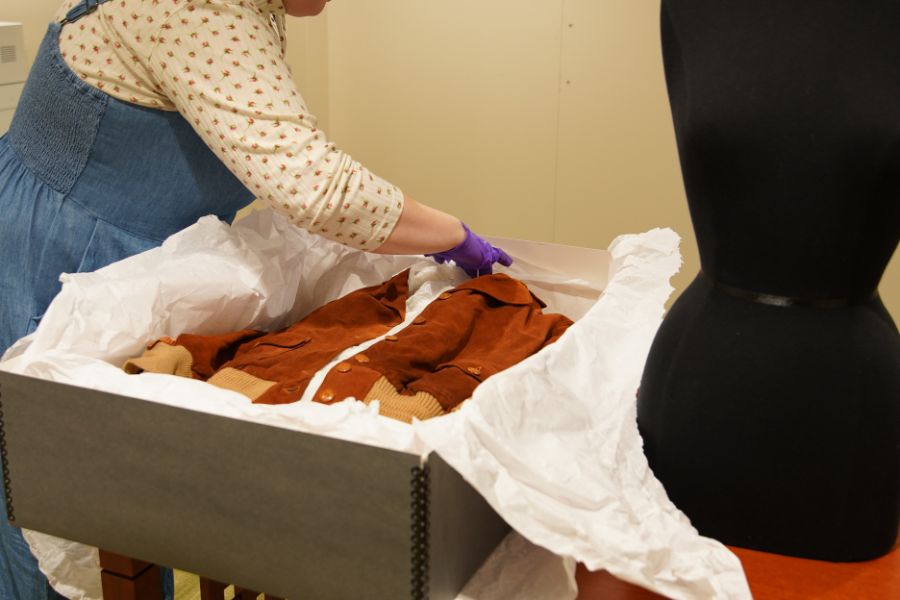3D, anamorphic video wall features Purdue’s most consequential engineers

The Purdue University College of Engineering stands at the intersection of innovation, ingenuity and vibrancy. An immersive art installation in Armstrong Hall represents an amalgamation of those values.
The new, anamorphic video wall — what appears to be a huge screen overlooking the Armstrong atrium — creates an optical illusion to the viewer that two-dimensional images are actually three-dimensional.
The wall features the “trifecta” of the most consequential Purdue engineers in the college’s 150-year history: Neil Armstrong, the first man to walk on the moon; Amelia Earhart, an aviation pioneer, and Lillian Gilbreth, the “First Lady of Engineering.” Also showcased is John M. Atalla, co-inventor of the metal-oxide-semiconductor field-effect transistor, or MOSFET, the most frequently manufactured device in history.
When standing on a carefully placed sticker in the middle of the lobby, viewers can relive Armstrong’s “small step” on the lunar surface that represented a “giant leap” for mankind; they can watch as Earhart departs a hangar in her red, Lockheed 10-E Electra to become the first woman to embark on a trans-Atlantic flight; they can immerse themselves in Gilbreth’s groundbreaking motion-tracking studies; and they can experience Atalla’s many inventions, including the personal identification number and the MOSFET.
Interspersed between these animations are vignettes unique to the College of Engineering, such as Purdue AI Racing’s autonomous race car flashing across the screen and Purdue Space Program’s rocket launching in a fiery plume of smoke.
The college partnered with Exhibitry, an interactive media vendor, to assemble the video wall and create many of the animations.
“We're designing the content to play with your sense of perspective, so from a particular viewing angle, you see depth and shadow and highlights that bring objects off the screen,” Exhibitry President Tracy Evans said. “It's an engineered approach to animation that uses digital magic tricks to affect visual perception and bring dimensionality to what is actually 2D content.”

The wall is made of a network of several dozen modules, each containing thousands of high-resolution LED pixels that are programmed to display vibrant colors and precise contrasts. The modules were then carefully aligned to create a flat and seamless video wall.
“The wall isn't just about visuals. It's a celebration of Purdue's commitment to innovation, discovery and storytelling. For students and faculty, especially those in engineering, it's a real-world example of how disciplines intersect, where the visual arts, computer science and structural engineering meet,” Evans said. “The content of the wall honors Purdue's legacy while highlighting the latest advances and how the university is shaping the future. If you're part of the Purdue community, this wall is something you won't want to miss.”
How does it work?
To use the video wall, simply stand on the sticker on the floor of the atrium to take in the full effect.
“The beauty of this wall is that there's no interaction required,” Evans said. “To experience the full impact, you simply walk by and stand in the designated viewing area, and the 3D effect automatically comes to life.”
The installation of the video wall is part of the College of Engineering’s 150th anniversary celebration.
